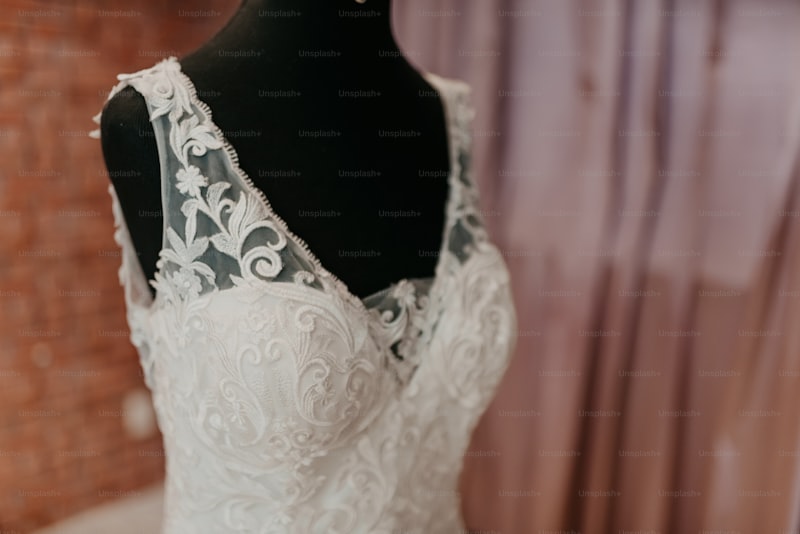Embroidered Fabrics for Unique Wedding Dresses: A Perfect Choice for Your Dream Gown
Weddings are one of the most significant events in a person's life, and choosing the perfect wedding dress is a crucial part of that journey. Among the many options available, embroidered fabrics stand out as a top choice for creating unique and exquisite wedding dresses. In this article, we will explore the various types of embroidered fabrics, their benefits, and how they can elevate your wedding dress style. Whether you're opting for classic elegance or modern trends, incorporating embroidered fabrics can undoubtedly give you a one-of-a-kind bridal look.
Understanding Embroidered Fabrics
Embroidered fabrics are textiles that have been enhanced with intricate designs sewn into them. This art form has been around for centuries, and it adds a beautiful dimension to any fabric, making it ideal for wedding dresses. There are various types of embroidery, each offering different textures, patterns, and styles to suit your wedding theme.
Types of Embroidered Fabrics
| Fabric Type | Characteristics | Best For |
| Organza | Lightweight, sheer, and crisp, offering a delicate look | Romantic and fairy-tale themed weddings |
| Tulle | Soft and flexible, typically used in layers | Modern and whimsical dress designs |
| Lace | Classic and intricate with floral patterns | Vintage or traditional weddings |
| Silk | Luxurious and soft, often featuring high-quality embroidery | Elegant and sophisticated ceremonies |
| Chiffon | Flowy and lightweight with a soft drape | Beach or outdoor weddings |
The Advantages of Using Embroidered Fabrics
Choosing embroidered fabrics for your wedding dress comes with numerous benefits. Let's take a closer look at why these fabrics are a popular choice among brides:
1. Uniqueness
Every bride desires to look unique on her special day, and embroidered fabrics can help achieve that goal. The intricate patterns can be customized to reflect your personality, enabling you to make a bold statement with your dress.
2. Textural Richness
Embroidered fabrics add textural richness that plain fabrics simply cannot match. This can enhance the visual appeal of the wedding dress, making it more engaging and photogenic.
3. Versatility
With a variety of styles and techniques available, embroidered fabrics can cater to nearly any wedding aesthetic. Whether you're planning a grand formal wedding or an intimate gathering, there’s an embroidered option for every vision.
4. Combination with Other Fabrics
Embroidered fabrics can easily be mixed and matched with other fabric types to create a layered look that balances elegance and creativity. Imagine a silk gown adorned with intricate lace embroidery for a classic yet contemporary appeal.
Design Ideas for Embroidered Wedding Dresses
When it comes to designing your wedding dress with embroidered fabrics, the options are nearly limitless. Here are some captivating design ideas to inspire you:
1. All-over Embroidery
An all-over embroidered effect creates a stunning visual impact. Consider a gown that features intricate embroidery throughout the entire fabric, resulting in a mesmerizing look that is sure to captivate.
2. Embroidered Cape
Add an embroidered cape to your dress for a touch of drama and sophistication. A beautifully embroidered cape can act as both a statement piece and an elegant layer to complement your gown.
3. Layered Tulle with Embroidery
Combine layers of tulle with embroidered motifs for a whimsical and ethereal effect. This design is particularly suitable for outdoor or fairy-tale themed weddings, where a light and airy feel is desired.
Choosing the Right Embroidered Fabric
While the selection of embroidered fabrics is vast, choosing the right one for your wedding dress involves considering several factors:
1. Wedding Theme
Your overall wedding theme should guide your fabric choice. For example, if you're going for a vintage look, lace is an appropriate choice. On the other hand, a modern and minimalist theme might call for a silk gown enhanced with subtle embroidery.
2. Body Type
Different fabrics flatter different body types. For instance, structured fabrics like organza provide support for those with an hourglass figure, while softer fabrics like chiffon can enhance a more relaxed silhouette.
3. Season
Consider the season when selecting your embroidered fabric. Lightweight materials like chiffon or lace are ideal for summer weddings, while richer fabrics such as silk or velvet work well in colder months.
Care Tips for Embroidered Fabrics
To ensure your embroidered wedding dress remains in pristine condition, follow these care tips:
1. Dry Cleaning
Always opt for professional dry cleaning when caring for embroidered fabrics. The intricate designs require delicate handling that home washing methods may not provide.
2. Proper Storage
Store your dress in a cool, dark place, away from direct sunlight. Use a breathable garment bag to avoid dust and potential damage.
3. Avoid Moisture
Keep your embroidered gown away from moisture. Humidity can lead to discoloration and deterioration of the fabric, particularly for delicate embroideries.
Conclusion
In conclusion, embroidered fabrics can transform a standard wedding dress into a stunning piece of art. The uniqueness, textural richness, and versatility of these fabrics make them an excellent choice for brides looking to express their individuality on their special day. When considering design ideas, remember to think about your wedding theme, body type, and the season. With proper care, your embroidered wedding dress can remain a treasured keepsake for years to come.
Lastly, for brides still exploring their options, explore the realm of accessories like embroidered veils or embellished headpieces, which can beautifully complement the overall look. Whether you choose an all-over embroidered gown or a subtle design, your wedding dress will surely be as unique as your love story.
